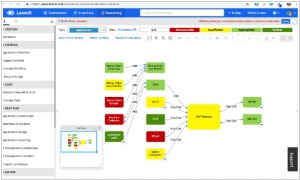Enterprise Architecture software
Updated: July 30, 2023
Enterprise Architecture software is a robust and comprehensive solution that enables organizations to design, plan, and manage their complex business structures, processes, and IT systems. This software provides a centralized platform for documenting and visualizing an organization's entire architecture, including its business capabilities, information flows, technology infrastructure, and applications. By capturing and analyzing this detailed information, Enterprise Architecture software helps businesses identify opportunities for improvement, streamline operations, and align their IT investments with strategic goals. Moreover, it facilitates collaboration and communication among different departments and stakeholders, promoting a holistic and integrated approach to decision-making. With the ability to create and simulate various architecture scenarios, organizations can confidently make informed choices to optimize their resources, mitigate risks, and drive innovation, ensuring that their enterprise architecture remains agile and adaptable to ever-changing business demands.
Enterprise architecture is the process by which organizations standardize and organize IT infrastructure to aligns with business goals. These strategies support digital transformation, IT growth and the modernization of IT as a department.
See also: Top 10 IT Service Desk software
See also: Top 10 IT Service Desk software
2020. Enterprise architecture software company LeanIX raises $80M

LeanIX, the enterprise architecture software company established in Bonn, Germany, has successfully concluded its Series D funding round, raising $80 million. This latest investment brings LeanIX's total funding to over $120 million. Founded in 2012, LeanIX operates within the enterprise architecture realm, offering a Software-as-a-Service (SaaS) solution often likened to a "Google Maps for IT architectures." The software empowers organizations to visually map their entire technology landscape, encompassing both legacy software and modern SaaS applications. It enables the creation of metadata that outlines the specific business processes supported or enabled by each technology, the underlying technological infrastructure, the teams utilizing or having access to it, and how the different architectural components interact with each other.

